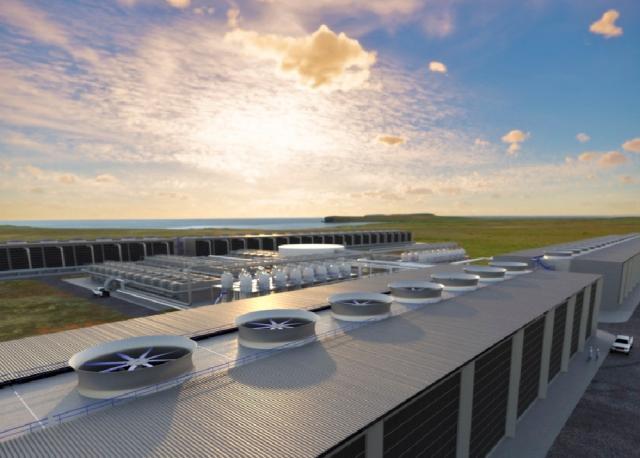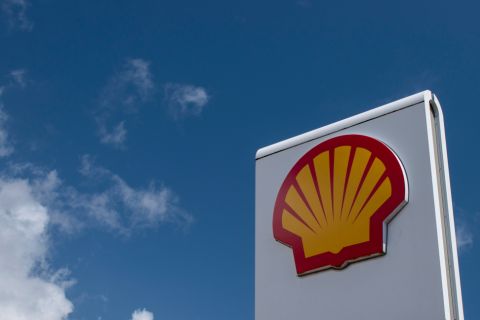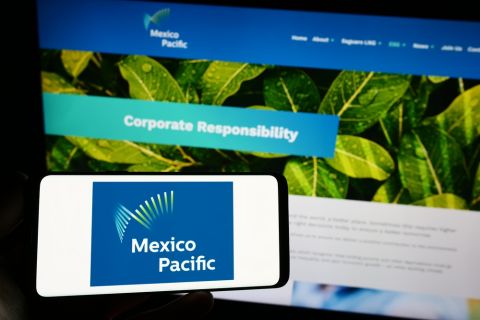
Occidental Petroleum, through its subsidiary 1PointFive, is planning a $1 billion direct air capture hub in the Permian Basin. The facility is expected to be operational by 2024. (Source: Oxy Low Carbon Ventures investor presentation)
Occidental Petroleum, through its affiliate 1PointFive, announced a $1 billion investment in a direct air capture (DAC) hub based in the Permian Basin.
Oxy has set a net-zero goal for 2050, but is looking beyond its own borders to give other CO₂ emitters “the tools they need to achieve net-zero or net negative emissions,” said CEO Vicki Hollub on March 23 during an investor call for Oxy’s Low Carbon Ventures subsidiary.
“A central part of that plan is direct air capture, which is critical to meeting Paris Agreement targets by enabling rapid emission reduction and low carbon product development,” Hollub said.
According to Oxy, the DAC facility is in the FEED stages now, with construction likely to begin during the second half of the year, and planned start-up in 2024.
Oxy estimates that its Permian Basin DAC hub will have the capability of capturing 500,000 tonnes of CO₂ per year. The producer has partnered with Carbon Engineering and Worley while also leveraging technology applications from its OxyChem subsidiary for technology, engineering and construction of the DAC hub.
Richard Jackson, president, U.S. onshore resources and carbon management, operations for Oxy said the DAC facility would enable several products for carbon markets, one of which is capturing emissions from industrial sources and sequestering them underground.
“From direct air capture with sequestration, we can create a carbon removal credit to be purchased by businesses seeking to offset their emissions,” he said. “Direct air capture combined with Carbon Engineering’s Air to Fuels process produces a sustainable fuel for use in aviation, maritime and long-haul trucking operations.”
Jackson added that CO₂ from DAC could also be supplied as a raw material to make new low-carbon products like building materials, chemicals or clothing.
“Finally, direct air capture CO₂ feedstock can used in Oxy’s CO₂ EOR operations to enable net-zero oil to again help service a transportation sector,” he said.
Oxy stated that by 2035, it plans to have 70 such DAC plants online around the world. The facilities will be developed, owned and operated by Oxy’s 1PointFive subsidiary. In order to facilitate a DAC hub, Jackson said, a host nation would likely need to first meet several qualifying criteria, including supportive public policy and incentives for CO₂ removal in place “today or in the near term.”
“There must be growing demand from customers to our products,” he said. “We must see scalable attributes such as sustainable geologic storage and zero-emissions power supply. There needs to be a mature supply chain in place to enable construction and operations. We also need an environment that supports high integrity and transparent operations.”
Jackson said the “most advantaged” location for DAC facilities is the U.S., but that Oxy expects more countries to “help de-risk this scalable model over the next decade with growing appreciation and support currently happening.”
Oxy has also laid out a “net-zero support scenario” in which it could deliver 135 DAC facilities by 2035.
“This entails increased policy and market support to achieve net-zero on a global scale,” Jackson said. “This is a scenario that would enable a broader low-carbon economy to accelerate with timing and scale necessary for global net-zero by 2050.”
Recommended Reading
NGL Growth Leads Enterprise Product Partners to Strong Fourth Quarter
2024-02-02 - Enterprise Product Partners executives are still waiting to receive final federal approval to go ahead with the company’s Sea Port Terminal Project.
Canadian Natural Resources Boosting Production in Oil Sands
2024-03-04 - Canadian Natural Resources will increase its quarterly dividend following record production volumes in the quarter.
Shell’s CEO Sawan Says Confidence in US LNG is Slipping
2024-02-05 - Issues related to Venture Global LNG’s contract commitments and U.S. President Joe Biden’s recent decision to pause approvals of new U.S. liquefaction plants have raised questions about the reliability of the American LNG sector, according to Shell CEO Wael Sawan.
BP Pursues ‘25-by-‘25’ Target to Amp Up LNG Production
2024-02-15 - BP wants to boost its LNG portfolio to 25 mtpa by 2025 under a plan dubbed “25-by-25,” upping its portfolio by 9% compared to 2023, CEO Murray Auchincloss said during the company’s webcast with analysts.
Mexico Pacific Appoints New CEO Bairstow
2024-04-15 - Sarah Bairstow joined Mexico Pacific Ltd. in 2019 and is assuming the CEO role following Ivan Van der Walt’s resignation.





